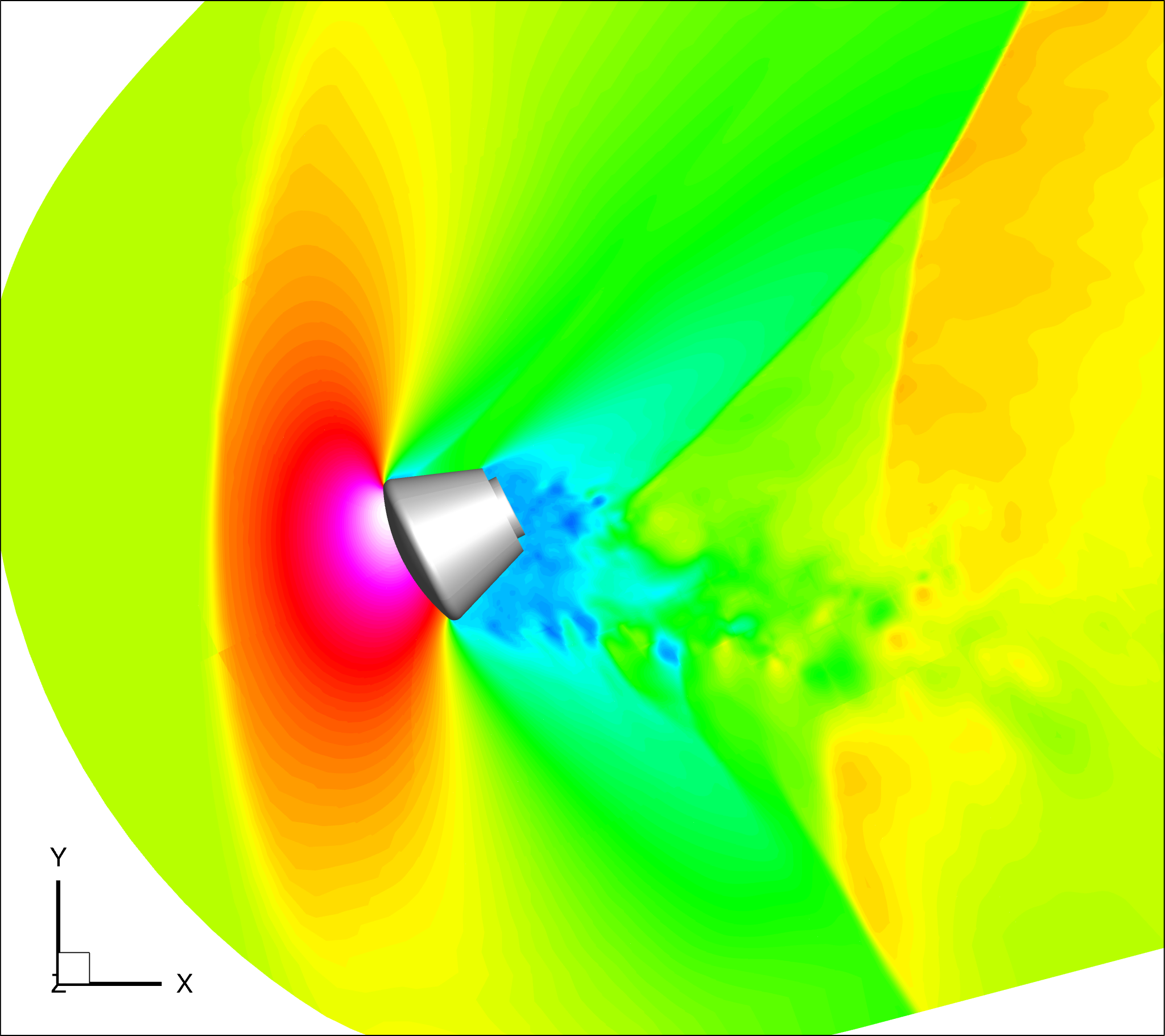Study of scale effects on the atmospheric entry environment of atmospheric entry capsules
JAXA Supercomputer System Annual Report February 2024-January 2025
Report Number: R24EDA201J04
Subject Category: Aeronautical Technology
- Responsible Representative: Kazuyuki Nakakita, Aviation Technology Directorate, Fundamental Aeronautics Research Unit
- Contact Information: Shingo Matsuyama(matsuyama.shingo@jaxa.jp)
- Members: Shingo Matsuyama, Ryotaro Murakami, Kasumi Nakura
Abstract
It is known that aerodynamic heating rate, real gas aerodynamic characteristics, and static and dynamic instabilities, which are important prerequisites for the design of atmospheric entry systems, change significantly with changes in capsule shape, but they also change with different representative lengths (scales), even for similar shapes. However, there is no quantitative correlation known to what extent changes in scale affect these properties, so it is necessary to predict them at each design stage. The objective of this study is to develop a method for predicting scale effects for a 3/5 scale capsule and a wind tunnel model of HTV Small Re-entry Capsule (HSRC), and to validate the developed method by comparing it with flight data.
Reference URL
N/A
Reasons and benefits of using JAXA Supercomputer System
In this study, three-dimensional analyses are performed for an atmospheric entry capsule flying at an angle of attack, so a large computational cost is inevitable. In addition, since turbulence analysis by Large Eddy Simulation (LES) is the main method for evaluating dynamic instability in transonic speeds, a large-scale three-dimensional unsteady analysis is inevitably required. In addition, for flight conditions exceeding Mach 10, the governing equations for a large number of chemical species and internal energies must be solved because chemical reactions and excitation of internal energy modes occur behind the shock wave. These analyses are computationally very expensive and require the use of a supercomputer.
Achievements of the Year
-LES analysis was performed on the capsule geometry of the HSRC scaled down to 3/5 scale to evaluate the characteristics of capsule oscillation motion due to dynamic instability.
-The oscillation motion of the capsule model was simulated by LES for a pitch free-to-rotate
wind-tunnel test with one degree of freedom (Figure 1), and the results were compared with the wind-tunnel test data.

Fig.1: Result of LES simulating a pitch free-to-rotate wind-tunnel test in a transonic wind tunnel. The flow field around a free oscillating capsule model in a Mach 1.1 flow is shown by the instantaneous pressure distribution.
Publications
N/A
Usage of JSS
Computational Information
- Process Parallelization Methods: MPI
- Thread Parallelization Methods: OpenMP
- Number of Processes: 52 - 2788
- Elapsed Time per Case: 240 Hour(s)
JSS3 Resources Used
Fraction of Usage in Total Resources*1(%): 0.46
Details
Please refer to System Configuration of JSS3 for the system configuration and major specifications of JSS3.
| System Name | CPU Resources Used(Core x Hours) | Fraction of Usage*2(%) |
|---|---|---|
| TOKI-SORA | 12666334.20 | 0.58 |
| TOKI-ST | 0.00 | 0.00 |
| TOKI-GP | 0.00 | 0.00 |
| TOKI-XM | 0.00 | 0.00 |
| TOKI-LM | 0.00 | 0.00 |
| TOKI-TST | 0.00 | 0.00 |
| TOKI-TGP | 0.00 | 0.00 |
| TOKI-TLM | 0.00 | 0.00 |
| File System Name | Storage Assigned(GiB) | Fraction of Usage*2(%) |
|---|---|---|
| /home | 1048.50 | 0.71 |
| /data and /data2 | 6651.00 | 0.03 |
| /ssd | 251.00 | 0.01 |
| Archiver Name | Storage Used(TiB) | Fraction of Usage*2(%) |
|---|---|---|
| J-SPACE | 2.76 | 0.01 |
*1: Fraction of Usage in Total Resources: Weighted average of three resource types (Computing, File System, and Archiver).
*2: Fraction of Usage:Percentage of usage relative to each resource used in one year.
ISV Software Licenses Used
| ISV Software Licenses Used(Hours) | Fraction of Usage*2(%) | |
|---|---|---|
| ISV Software Licenses(Total) | 0.00 | 0.00 |
*2: Fraction of Usage:Percentage of usage relative to each resource used in one year.
JAXA Supercomputer System Annual Report February 2024-January 2025


